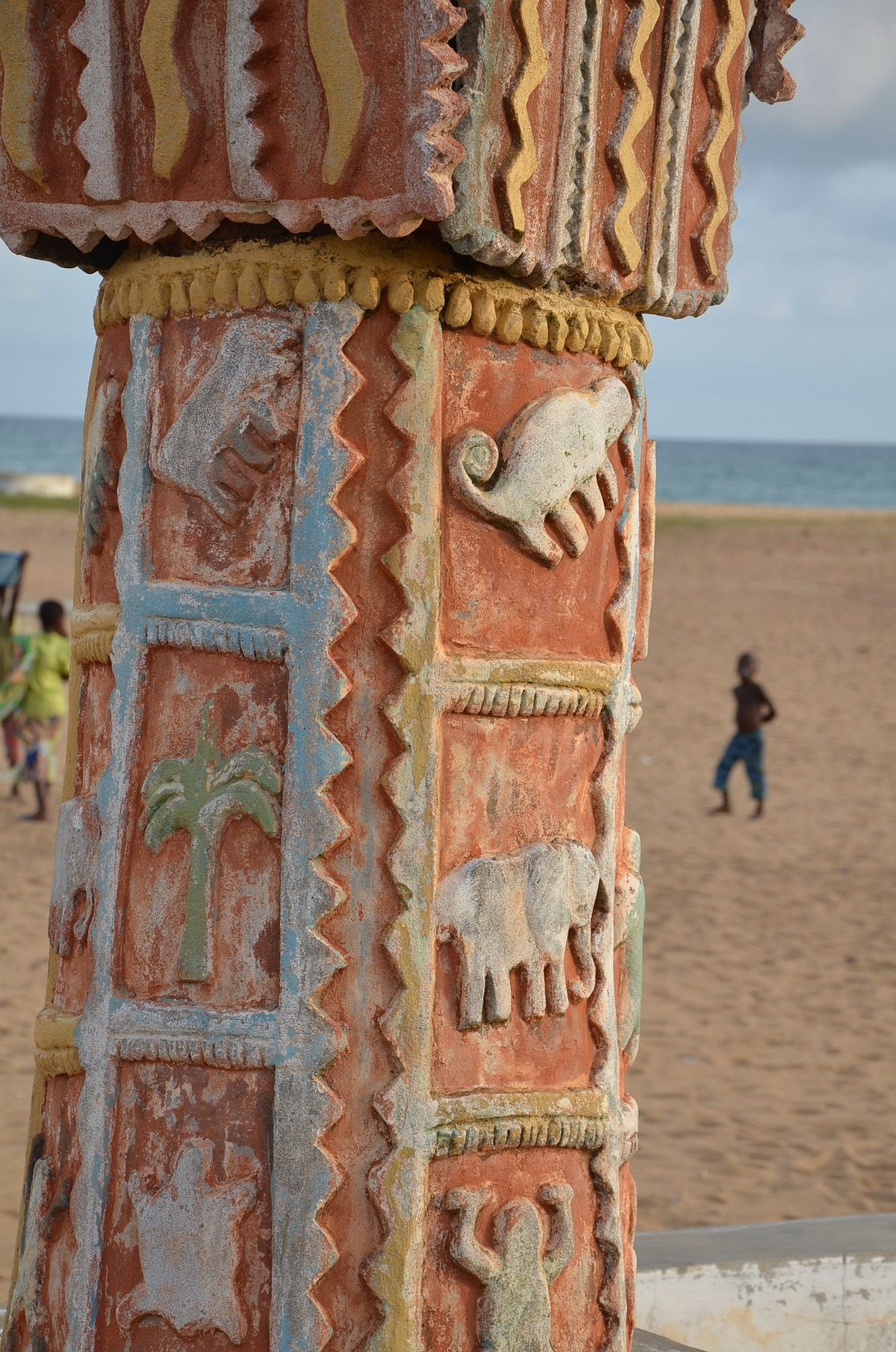To discover the Door of No Return is to walk in the footsteps of slaves and live a unique experience, an incredible journey full of emotions. Near this attraction are other tourist places of Benin that you can explore in the city of memories.
The Slave Route stretches from the city to the Gate of No Return, with various statues and monuments, some of which are now faded or damaged. However, here are the important stations of this bloody road that are notable to this day.
The Auction Square The Auction Square is of course the market where the slaves were exchanged for junk (objects of little value). Transactions were made between kings and private European merchants (French, Portuguese, English, Danish, Dutch). For example, for one cannon, a foreign merchant can get 21 female slaves or 15 able-bodied arms in exchange.
The Oblivion Tree
These slaves thus bartered for junk will be led to the tree of oblivion. It is a mystical tree planted by the kings of Dahomey in 1527 with the aim of making slaves amnesiac, weak, unable to remember their identity and their geographical landmark.
The male slaves were doing nine times around the tree, from right to left and the women seven times, from left to right.
The Black Box
< br/>The slaves, unable to escape, are then kept in the Black Box, without light, barely fed and deprived of all freedom for a good two weeks. This box is invented by European merchants with the aim of sorting out the strongest Africans capable of supporting the journey. They thus reduce the losses on their "human goods".
The dying, weak or dying slaves are directly buried alive in a common grave not far from the black square. Note that half of the slaves who enter the black box die during this test. The rest is then directed to the return tree.
The return tree
The return tree is also a mystical tree which aims to attach the soul of the slaves to their native land. Thus, when they die, their soul will return to the continent. The slaves leaving the black box therefore go around this tree three times before returning to the door of no return: the departure towards an unknown destiny. Some to die on the way and thrown into the sea, others to land in the fields of cotton, rice or sugar cane with the constant threat of the whip..
About the Ouidah Slave Route
AYIFFA TOURISM
Your travel advisor
Benin, now is the time to go! The country raises its head and shines... Represented by a tree standing in the heart of the African savannah, Benin is a country of centuries-old culture and tradition. Hospitable and welcoming people, green landscapes, sunny beaches, let yourself be carried away by the charm of the country which offers you the best of responsible tourism. Looking for a trip off the beaten track allowing you to experience idyllic moments in a natural and unique space, your travel agent opens the doors to a different world.
The most beautiful travel destinations in Benin
Guide to the most beautiful tourist destinations to discover during your trip to Benin
AYIFFA TOURISME
Destination 1: The History of the Slave Trade (Discovering the Slave Route)
1 day
15
from 25 000 FCFA per adult
AYIFFA TOURISME
Destination 2: Gogotinkpon on Lake Ahémé, where fishermen get involved (The circuit worth a thousand detours)
1 day
20
from 20 000 FCFA per adult
AYIFFA TOURISME
Destination 3: The temple of the Pythons of Ouidah (sacred place, full of history)
1 day
32
from 10 000 FCFA per adult





